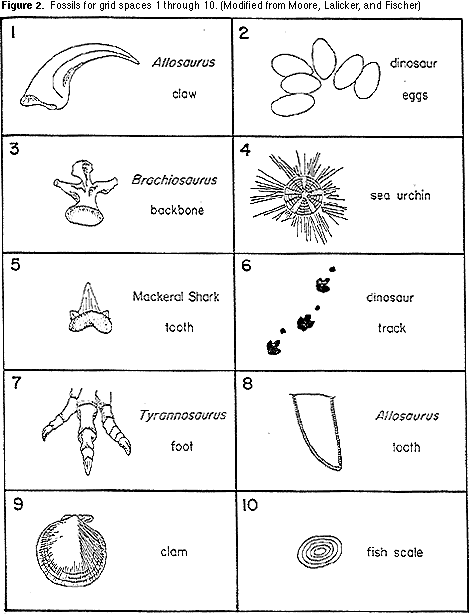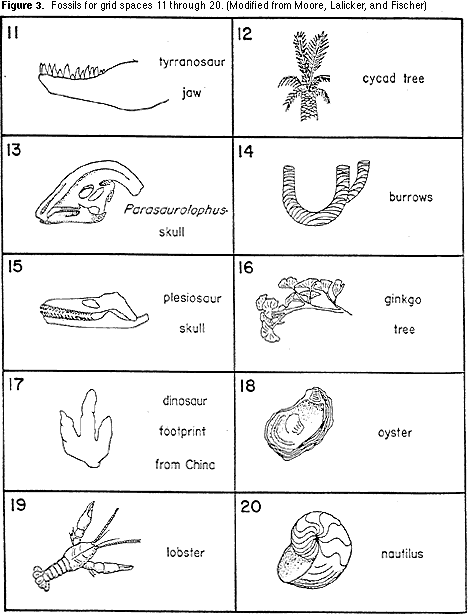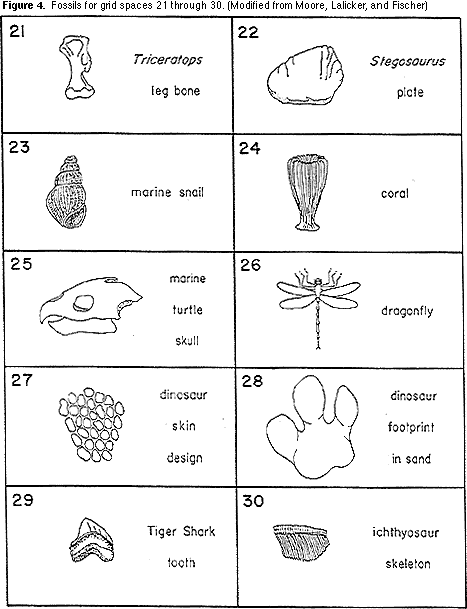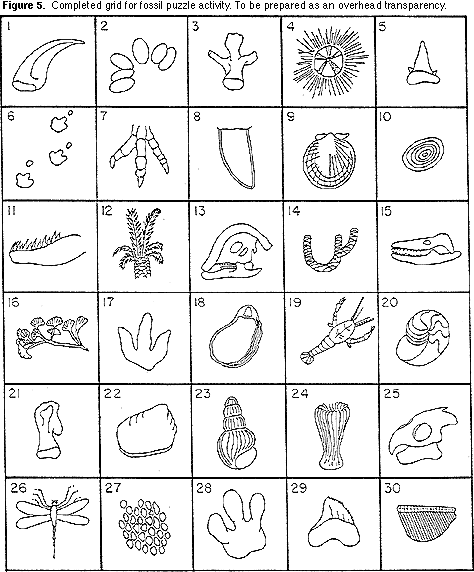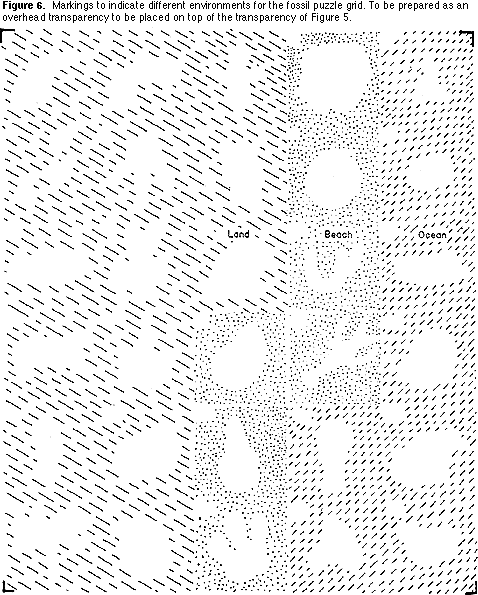WHERE CAN I SEE THE SEA?CRAIG A. MUNSART and KAREN ALONZI-VAN GUNDYINTRODUCTIONUnderstanding how the pieces of the fossil puzzle fit together allows the paleontologist to imagine the earth as it was millions of years ago. Introduce the activity to the students by telling them that they are all paleontologists and have found many different fossils. Based upon those fossils, they will have to draw a map showing what environments were present in a certain area more than 70 million years ago. (Note: This activity will use drawings of fossils. When available, actual fossils should be used to replace the drawings. In an ideal case, only actual fossils would be used. See the list of fossil sources at the end of the lesson.)Time: 45-90 minutes
MATERIALS— Copy of prepared grid (Figure 1) for each student— Fossil figures and descriptions (Figures 2, 3, and 4), enlarged if possible, cut apart, and placed on individual 3" x 5" cards, one for each student. (Duplicates can be made as needed to accommodate a larger class.) — Watch or clock that indicates seconds — Blue, yellow and green colored pencils for each student. — Pencil with eraser for each student.
1) Have all students stand to one side or the back of the room. Each student should have a
pencil and eraser.
Part 2: Interpreting the Grid Once the grid is completed, the students should use dots and hatch marks to separate the different types of environments (Figure 6). Show examples of how to do this on the board. Discuss which fossils might indicate which environments. The normal sequence would have any fossils indicating a beach found in between those of the ocean and the land. For this part of the activity, students may work as individuals or pairs. Working in groups of more than two becomes difficult. Students should color their filled in grids as follows: boxes with land fossils, green; beach fossils, yellow; and sea fossil, blue. Allow students to discuss their own interpretations and their reasons for separating environments. Make an overhead transparency of the solution (Figure 6) and show it to the class, placing it on top of the transparency of Figure 5, after you have graded the papers. Discuss with students any different interpretations they may have.
EXTENSIONSIf actual fossils are used, some time should be taken to explain their ages and types.Assign different environments to students (individually or in small groups) as subjects to research in the library. Their task is to identify as many "fossils" as possible that might be found 50 million years from now. They should also describe other things that might indicate that particular environment (e.g., sand dunes on a desert).
Research different animals to see how they are adapted to their environments (e.g., flippers for
animals at sea, webbed feet for aquatic birds).
RESOURCESThe United States Geological Survey in Denver, Colorado, has hands-on fossil kits available for loan (for Colorado teachers only). The hundreds of fossils contained in the kit represent a broad spectrum of organisms, from plants to dinosaurs. For information contact the U.S. Geological Survey Library GEO Center at (303) 236-1015 (Denver, Colorado). The Colorado School of Mines also has fossil kits for loan. Information can be obtained by calling the Geology Museum of the Colorado School of Mines at (303) 273-3823 (Golden, Colorado).Other fossil sources might be state government geological surveys, local universities, high school earth science or geology departments, or clubs of amateur collectors. Often, such clubs congregate at fossil or mineral shows where specimens are on display and for sale. State geological survey departments are also excellent sources of free or inexpensive publications about where to find fossils in your area. Local rock shops (frequently with a large fossil inventory) are often owned by education-minded entrepreneurs who can be quite generous, either with small gifts or loans.
SUGGESTED READINGLockley, Martin. Tracking Dinosaurs. Cambrige: Cambridge University Press, 1991.Moore, Raymond C., Cecil G. Lalicker, and Alfred G. Fischer. Invertebrate Fossils, New York: McGraw-Hill, 1952. Norman, David. The Illustrated Encyclopedia of Dinosaurs. New York: Crown, 1985.
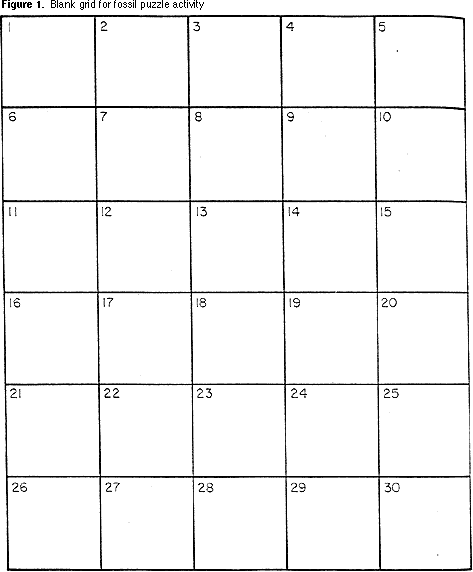  Return to Part 1 Return to Part 1
 Return to top Return to top
|
